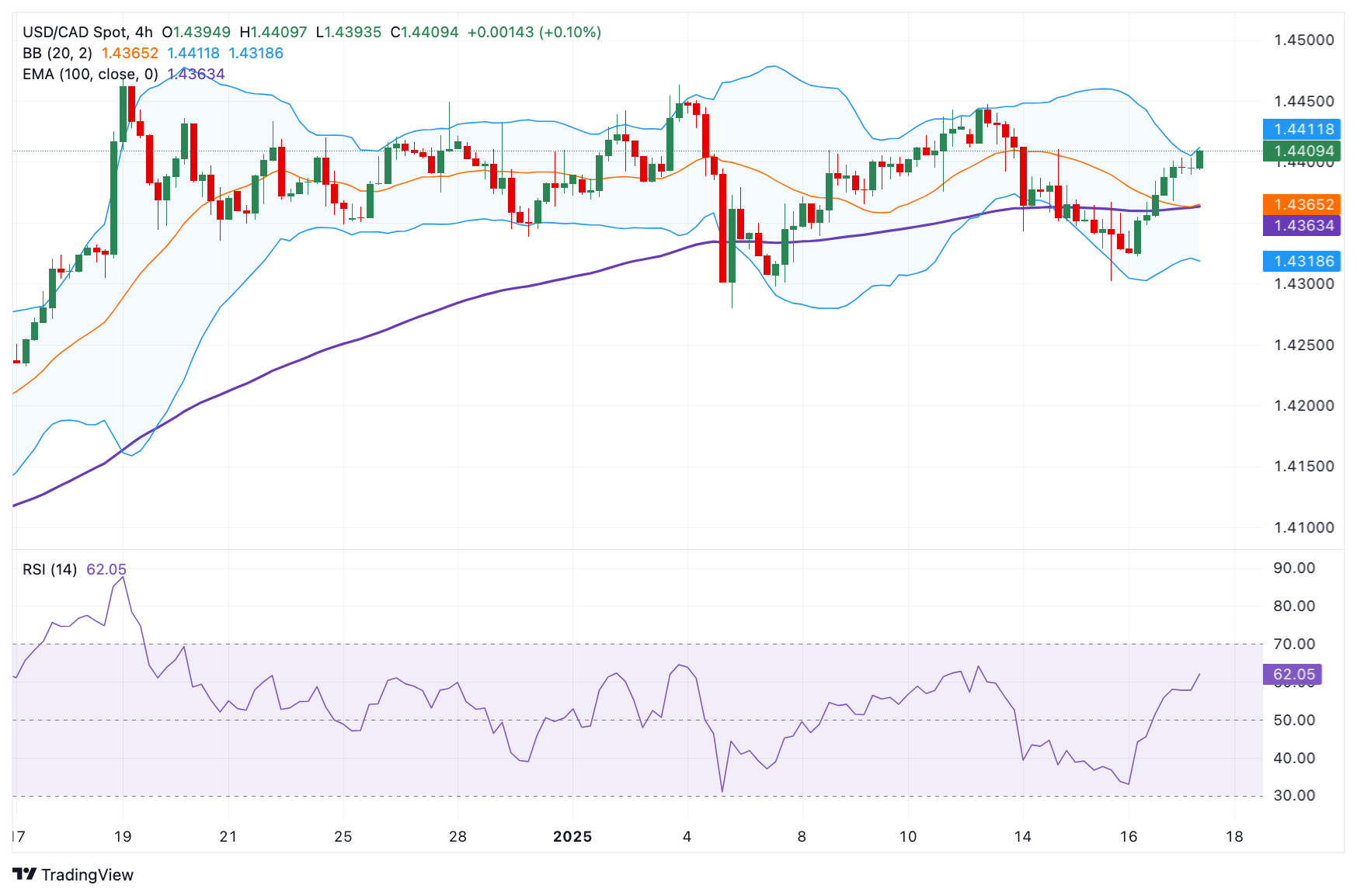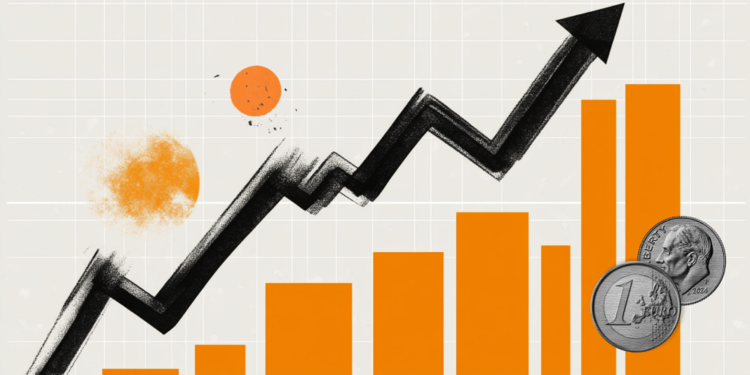- USD/CAD extends the rally to around 1.4405 in the early European session on Friday.
- The pair resumes its rise above the 100 EMA with the RSI indicator bullish.
- The first resistance level to watch is 1.4410; initial support level emerges at 1.4363.
The USD/CAD pair gains traction near 1.4405 during the early European session on Friday. The recovery of the US Dollar (USD) overall provides some support to the pair. However, growing expectations that the US Federal Reserve (Fed) would cut interest rates twice this year could limit the pair’s upside.
Technically, USD/CAD resumes its bullish path as the price holds at the key 100 EMA on the 4-hour chart. The bullish momentum is also supported by the Relative Strength Index (RSI), which is above the midline near 61.50, suggesting that further upside looks favorable in the short term.
The first upside barrier for the pair is seen at 1.4410, the upper boundary of the Bollinger Band. Sustained trading above the mentioned level could pave the way towards 1.4447, the January 13 high. Further north, the next hurdle to watch is the psychological level of 1.4500.
On the other hand, the initial support level for USD/CAD emerges at 1.4363, the 100-period EMA. A break of this level could see a drop to 1.4322, the January 16 low. The additional downside filter to watch is 1.4279, the January 6 low.
USD/CAD 4-hour chart
Canadian Dollar FAQs
The key factors that determine the price of the Canadian Dollar (CAD) are the level of interest rates set by the Bank of Canada (BoC), the price of oil, Canada’s main export product, the health of its economy, inflation and the trade balance, which is the difference between the value of Canadian exports and its imports. Other factors are market confidence, that is, whether investors bet on riskier assets (risk-on) or look for safe assets (risk-off), with the risk-on being positive for the CAD. As its largest trading partner, the health of the US economy is also a key factor influencing the Canadian dollar.
The Bank of Canada (BoC) exerts significant influence over the Canadian Dollar by setting the level of interest rates that banks can lend to each other. This influences the level of interest rates for everyone. The BoC’s main objective is to keep inflation between 1% and 3% by adjusting interest rates up or down. Relatively high interest rates are usually positive for the CAD. The Bank of Canada can also use quantitative easing and tightening to influence credit conditions, with the former being negative for the CAD and the latter being positive for the CAD.
The price of oil is a key factor influencing the value of the Canadian Dollar. Oil is Canada’s largest export, so the price of oil tends to have an immediate impact on the value of the CAD. Generally, if the price of oil rises, the CAD also rises, as aggregate demand for the currency increases. The opposite occurs if the price of oil falls. Higher oil prices also tend to lead to a higher probability of a positive trade balance, which also supports the CAD.
Although inflation has traditionally always been considered a negative factor for a currency, as it reduces the value of money, the opposite has actually happened in modern times, with the relaxation of cross-border capital controls. Higher inflation often leads central banks to raise interest rates, attracting more capital inflows from global investors looking for a lucrative place to store their money. This increases the demand for the local currency, which in the case of Canada is the Canadian Dollar.
The published macroeconomic data measures the health of the economy and may have an impact on the Canadian dollar. Indicators such as GDP, manufacturing and services PMIs, employment and consumer confidence surveys can influence the direction of the CAD. A strong economy is good for the Canadian dollar. Not only does it attract more foreign investment, but it may encourage the Bank of Canada to raise interest rates, resulting in a stronger currency. However, if economic data is weak, the CAD is likely to fall.
Source: Fx Street
I am Joshua Winder, a senior-level journalist and editor at World Stock Market. I specialize in covering news related to the stock market and economic trends. With more than 8 years of experience in this field, I have become an expert in financial reporting.








